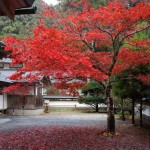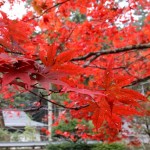Time and again I hear this term used and it gets either used completely incorrectly.
It is often combined with the word aperture, and voila, a statement that sounds remarkably technical, but actually makes little sense.
With a quick explanation and with the help of a picture or two I’d like to help answer the questions:
- What is depth of field (DoF)? and
- Why should you care about it.
What is depth of field?
A quick wiki search will give you this explanation.
This works, though it’s a little long winded and technical in parts. The purpose of my post is to slap you silly with a quick definition so you’ll remember it and be able to use the term correctly.
Then, all I ask is you help spread the meaning to others so they can too.
When you refer to Depth Of Field, you do so with it being shallow or deep.
If you have a photo in your collection, say, a landscape shot that has most if not all of the subject in a nice clear and sharp focus, then you had deep DoF when you took that shot. Alternatively, you may have taken a portrait photo of someone and all that’s in focus is their eyes… you look about the photo and you can see noticeable blur on the ears and around the hair, but the eyes are sharp. Or, perhaps only the nose is sharp. Or, the background is blurred and unrecognisable while the whole face is in good focus. When you took this shot, you had a shallow DoF.
So DoF refers to the distance range from the camera sensor/film that is in sharp focus. It’s as simple as that. How you can achieve those conditions are a different story altogether, but DoF is just that… the range of bits that are in focus.
Depth of Field is important because…
It dictates the type of photo you take and the results you can achieve. Sometimes you want a portrait style shot to draw attention of the viewer to a single point. It’s how our eyes and our brain naturally function… we prioritize the objects that stand out and are in focus to us while discarding the rest.
Alternatively in the case of say a landscape shot mentioned earlier, you might want to capture the whole scene in clear focus so that all of it can be seen clearly… there isn’t one particular item to draw attention to, but rather the capturing of the whole scene at that moment.
In the 2 example photos I have posted there, they are of the same tree, but with different points of interest. One is not simply a cropping of the other. In the first, above, I have tried to capture the whole scene… the solitary red-tree, the red leaves, with the reflection by the red leaves already fallen. Without some decent focus on all of those areas, the viewer could not see that. However, with the 2nd photo, I wanted just a few leaves up close and in focus with some leaves in the background providing a bit of context and the idea that perhaps there are many, many more… which of course there are.
I may cover some of the principles of producing varying depth of field for the effect you would like to create, in further articles. For now, I hope the meaning of depth of field is a little clearer for you.


{ 0 comments… add one now }